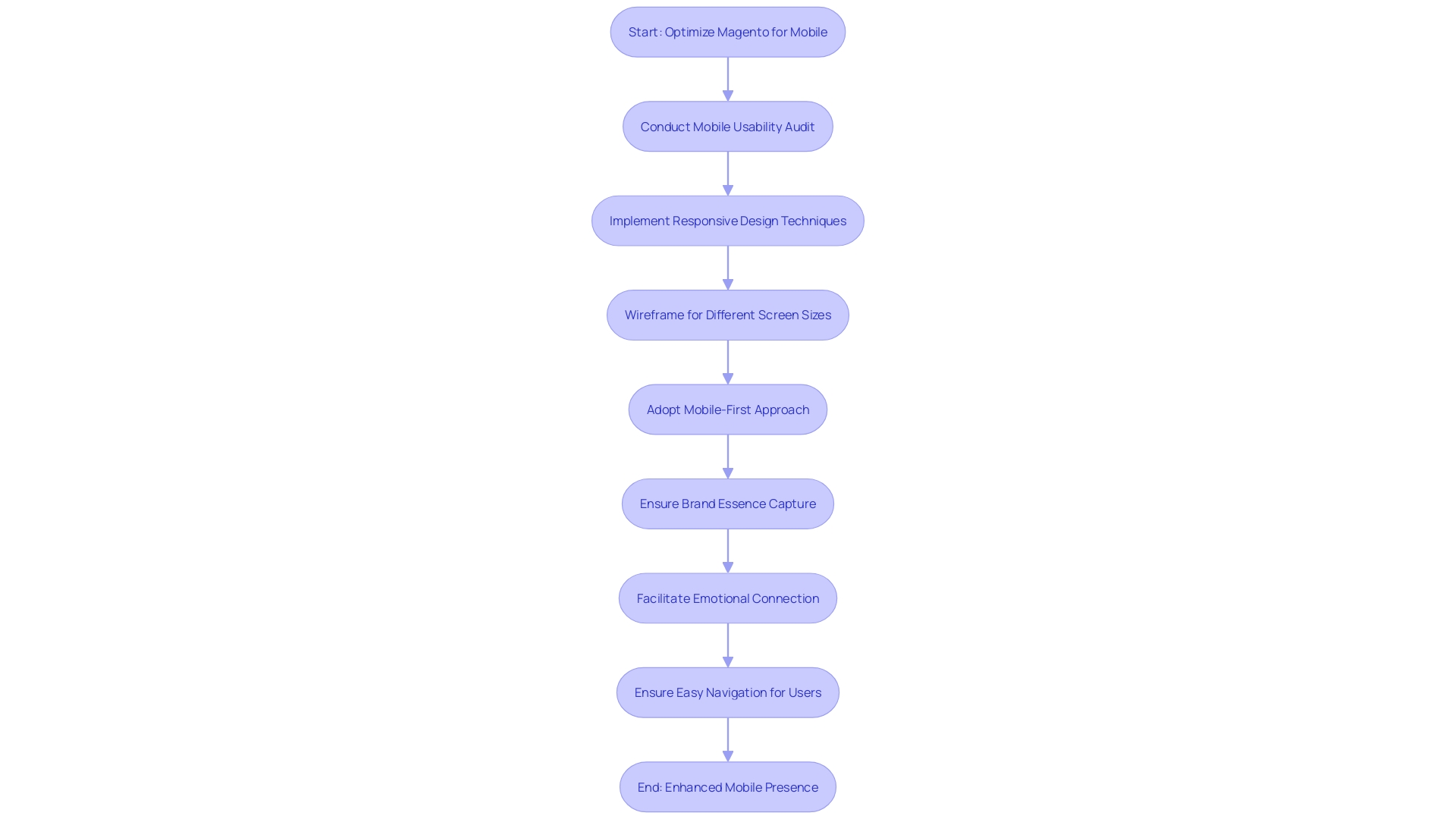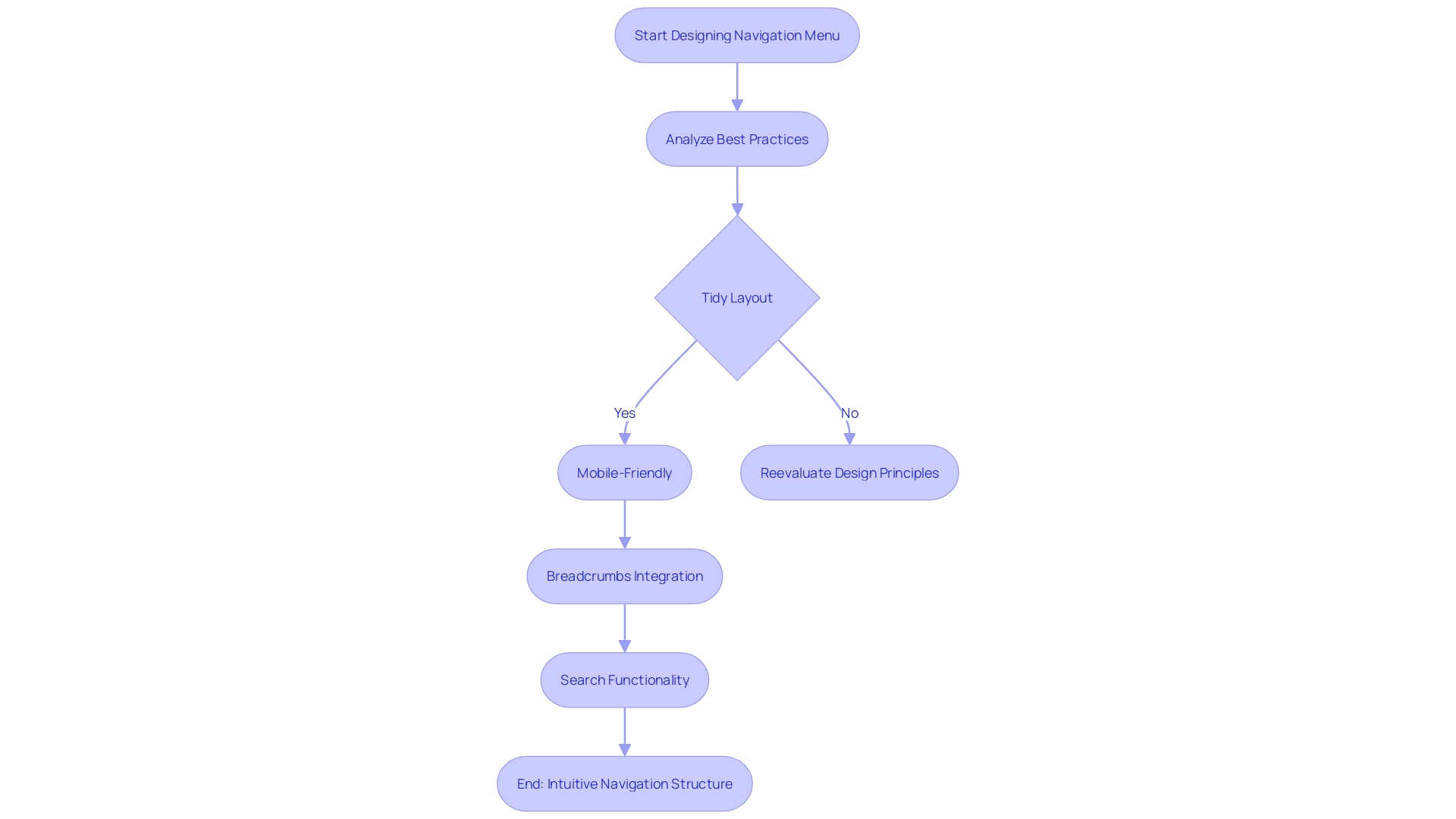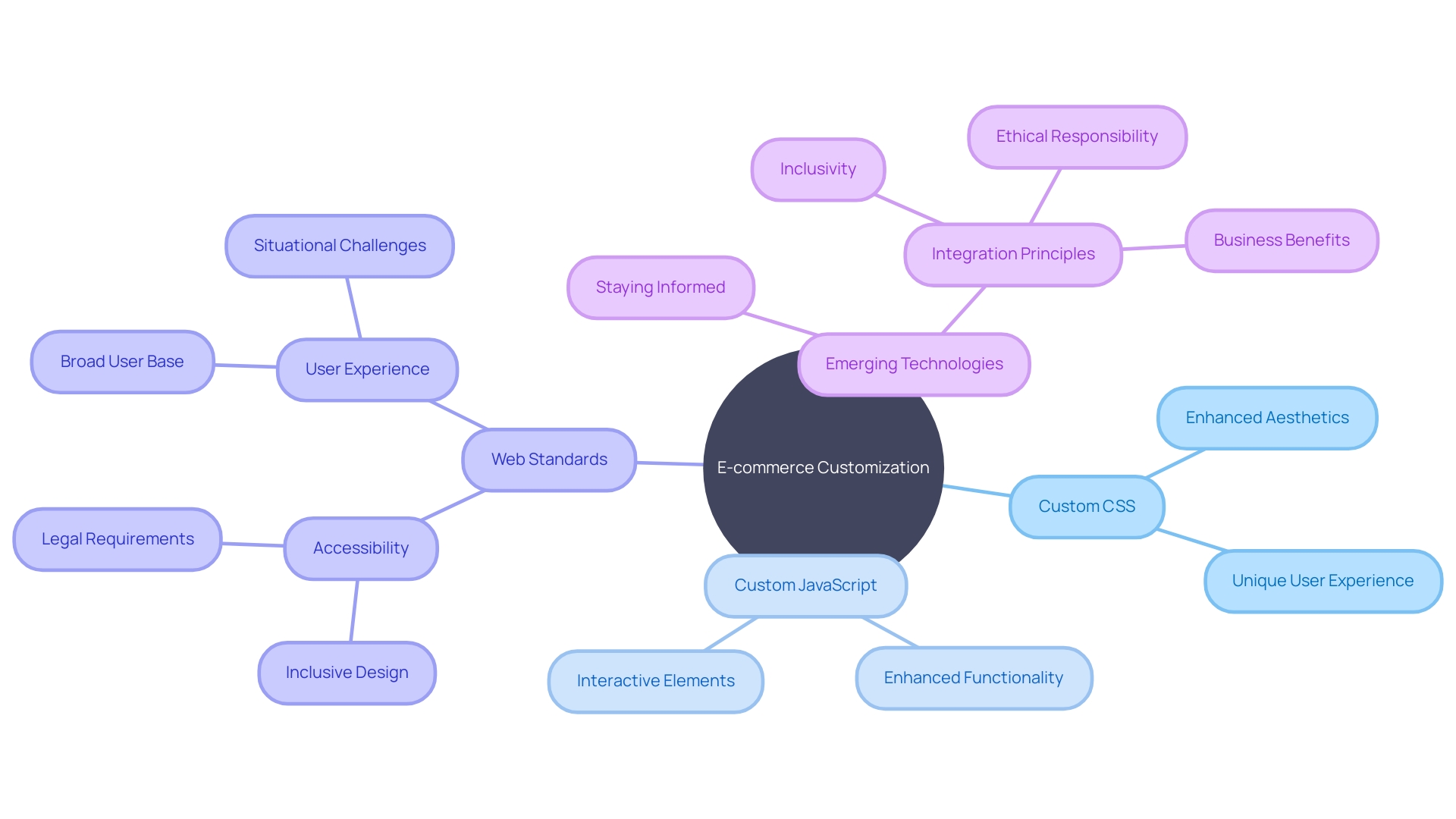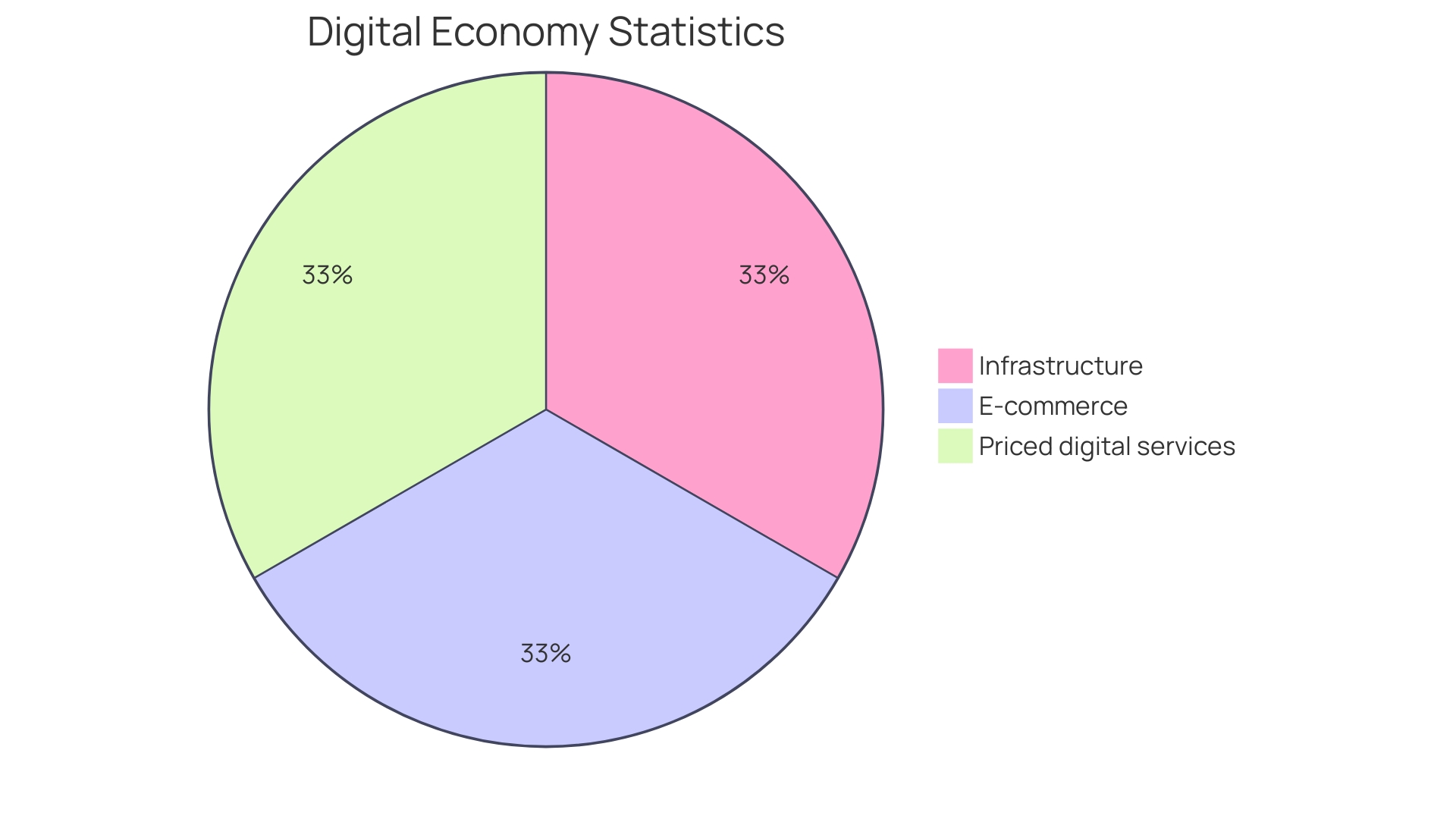Introduction
Delivering an exceptional user experience (UX) is paramount for the success of a Magento e-commerce platform. UX goes beyond aesthetics and encompasses the emotions, thoughts, and opinions of users as they interact with your website. To achieve positive user interactions, it's essential to understand the critical facets of UX and address the evolving needs and pain points of users.
This article explores the importance of user experience in Magento design, the process of choosing and customizing Magento themes, key elements of a Magento homepage design, optimizing website design for mobile and responsiveness, enhancing navigation and menu structure, creating high-quality content and using persuasive CTAs, customizing design elements such as buttons, fonts, and colors, advanced customization using XML layout files and templates, integrating custom CSS and JavaScript for enhanced functionality, SEO considerations and optimization techniques, configuring store functionality and extensions, testing and launching a Magento website, and best practices for continuous improvement and optimization. By implementing these strategies, businesses can significantly enhance user engagement, conversion rates, and overall customer satisfaction, ultimately impacting their bottom line and brand reputation.
Understanding the Importance of User Experience in Magento Design
Providing an outstanding experience (UX) is the foundation of a thriving Magento e-commerce platform. UX goes beyond mere aesthetics, encompassing an individual's emotions, thoughts, and opinions as they interact with your website. This complex idea, although appearing simple, necessitates a comprehensive comprehension of what motivates favorable interactions.
The User Experience Honeycomb, developed by a prominent designer and information architect, serves as a guide to the critical facets of UX that demand attention. It highlights that a digital product must be valuable, catering to the changing needs and challenges of individuals to remain significant.
In accordance with the most recent web design trends, it's apparent that individuals prefer functionality over elaborate designs. A site's navigability, speed, and responsiveness are not just preferences but expectations. With over 50% of internet traffic originating from mobile devices, and data showing a 15% higher conversion rate for sites loading in two seconds or less, the message is clear: performance and speed are paramount.
It is crucial to continuously identify and alleviate friction points in the journey of individuals. This unwavering pursuit of improvement, based on behavior research and data, leads to an intuitive and customer-centric digital environment.
Utilizing these insights, websites developed on the Magento platform should concentrate on establishing clear navigation paths, user-friendly layouts, and guaranteeing rapid loading times. Furthermore, with mobile UX's undeniable influence on engagement, loyalty, and vendor preference, optimizing for mobile responsiveness is non-negotiable.
By prioritizing these aspects of user experience in the development of their e-commerce platform, businesses can significantly enhance customer engagement, conversion rates, and overall satisfaction, ultimately influencing their bottom line and brand reputation.
Choosing and Customizing Magento Themes
Choosing the appropriate theme for your online store is crucial for developing a platform that not only reflects your brand's identity but also delivers an outstanding user experience. The journey begins with the theme selection process, influenced by a myriad of factors including aesthetics, functionality, and the unique narrative of your brand. Consider the case of Armor, a film industry portfolio created for Alexandra Murgu. This project demonstrated how a webpage could embody personal creativity and vision while maintaining a functional layout that's consistently echoed across various pages.
A wide array of customization options for Magento themes are available, enabling you to personalize the appearance of your site down to the smallest aspect. Leveraging these options, you can emulate successful projects like the new video accessibility plugin for the WordPress community supported by the Ford Foundation, which addressed specific workflow and content challenges.
Best practices in website development dictate that consistency is key. By creating a recognizable brand signature, like implementing logo guidelines, you ensure your brand's instant recognition across all platforms. This echoes the insights shared in the free eBook on building a Brand Style Guide with HubSpot, which emphasizes the significance of a cohesive design system.
Moreover, it's vital to prioritize user privacy and experience as outlined by industry leaders. An engaging online platform not only adheres to privacy standards but also incorporates personalization to enhance the shopping experience. This approach aligns with the philosophy that personalization can significantly elevate your brand's online presence.
In the rapidly evolving digital landscape, staying informed about the latest developments is essential. For example, the launch of Gutenberg 16.8 brought enhancements that may impact design choices for your online presence. Similarly, involvement in events like the State of the Word by WordPress co-founder Matt Mullenweg could offer invaluable insights into future trends.
In brief, the combination of a carefully selected e-commerce platform theme, strategic customization, and adherence to best practices can propel your online presence to not only meet but exceed business objectives. It's about blending the essence of your brand with the functionality and user experience that today's discerning audience expects.
Key Elements of a Magento Homepage Design
Your Magento website's homepage is the virtual storefront that sets the initial tone for customer experience. It's critical to craft a homepage that not only grabs attention but also conveys your brand's ethos and navigates customers with ease towards their objectives. Key elements to consider are the strategic placement of banners highlighting your latest offers, showcasing top products, featuring prominent categories, and integrating persuasive call-to-action (CTA) buttons to funnel visitors towards making a purchase.
The overall look and feel should be reflective of the latest trends without compromising the unique identity of your brand. Current shifts in web design point towards bold typography, a blend of maximalism and minimalism, with a focus on nature-inspired motifs and patterns. This approach ensures that the online platform remains contemporary and engaging.
Moreover, your homepage should function as a clear and inviting gateway, with every page on your site providing an implicit or explicit pathway back to it. This central navigational strategy is key to providing a user-friendly experience, as many visitors rely on the homepage to reorient themselves after delving deeper into a website.
Incorporating these principles into your homepage design can result in a more dynamic and effective online presence, encouraging visitors to explore further and engage with your content. Remember, a well-designed homepage not only reflects the quality of your offerings but also your dedication to an exceptional experience.
Optimizing Website Design for Mobile and Responsiveness
Optimizing your Magento site for mobile use is not just about aesthetics; it's about creating a functional, seamless experience for users who are increasingly turning to their mobile devices for shopping. Achieving a responsive design ensures that regardless of device or screen size, your online presence will maintain its usability and appeal.
Consider the story of Armur, a portfolio platform in the film industry, which exemplifies the importance of a site being an extension of one's personality and vision, while also being functional and adaptable to various pages and patterns. This same principle applies to e-commerce; your online platform must capture the essence of your brand and facilitate an emotional connection, all while ensuring the user can easily navigate and find what they're looking for.
Responsive web development is similar to a wardrobe that fits every occasion. It's about ensuring that your website looks and functions perfectly on any device, much like how a versatile outfit can be suitable for both a casual brunch and a fancy gala. To achieve this, it's essential to start with wireframing for different screen sizes, focusing on the core features and functionality of your site. This approach enables a transparent, succinct, and user-friendly navigation system that's easily accessible, particularly when implementing a mobile-first framework.
A mobile-first approach is not merely a design choice; it's a strategic business decision. As the comScore State of Digital Commerce report for 2024 highlights, understanding consumer behavior and engagement is crucial for developing a full-funnel strategy.
Take inspiration from the success stories on platforms like Flipkart, where innovation and support have helped entrepreneurs scale new heights. Your mobile-optimized online presence could be the cornerstone of a similar success story, driving engagement and conversions in the ever-expanding digital marketplace.

Enhancing Navigation and Menu Structure
Creating a seamless and intuitive navigation structure is a fundamental component of Magento website development. A well-designed navigation menu not only simplifies the search for products and information but also greatly enhances the overall experience, which can lead to improved conversion rates.
When organizing your categories, it's important to adopt best practices that have been tested and researched for optimal engagement. This encompasses a tidy and organized layout that mirrors your brand's identity and guarantees mobile-friendliness, as more than half of worldwide internet traffic originates from mobile devices. Incorporating breadcrumbs in your layout can guide individuals through their shopping journey, enhancing the interface and making it easier for them to navigate back to previous sections.
Moreover, the addition of a search functionality is not just a convenience but a necessity. Statistics show that mobile sites that load in two seconds or less see a 15% higher conversion rate. This highlights the importance of performance and responsiveness over elaborate design elements. Therefore, a successful search system can greatly decrease the amount of time that individuals spend searching for products, directly adding to a more efficient and gratifying mobile experience.
In summary, by following these recommended methods and guidelines, you can guarantee that individuals will discover navigating your e-commerce platform to be user-friendly and hassle-free, resulting in greater involvement and a higher probability of repeat visits and conversions.

Creating High-Quality Content and Using Persuasive CTAs
Crafting engaging content combined with compelling Call-to-Actions (CTAs) is crucial for the triumph of a Magento e-commerce site. High-quality product descriptions, engaging blog content, and informative pages are the cornerstone of effective online engagement and conversion. To craft content that resonates with your audience, consider leveraging user-generated content and reviews, as they can significantly bolster trust and authenticity. For instance, incorporating static questions with quantitative variables can be particularly effective for products that have multiple uses or require detailed specifications.
When it comes to CTAs, clarity and relevance are key. They should be noticeable and motivate individuals to perform activities that are in line with their interests, such as completing a transaction or signing up for a newsletter. The importance of CTAs is underscored by their impact on click-through rates (CTR), which measure the effectiveness of online campaigns. A well-placed and thoughtfully designed CTA can significantly improve CTR, leading to better campaign performance and higher conversion rates.
Ensuring that your website adheres to the Web Content Accessibility Guidelines is another critical factor in expanding your reach and inclusivity. This involves creating content structures that are easily navigable, whether through traditional means or assistive technologies like screen readers or voice commands.
Moreover, conversion rate optimization (CRO) is not just a trendy term but a vital strategy for e-commerce success. It requires a profound comprehension of interactions with individuals, identifying conversion obstacles, and implementing tested solutions. With an effective CRO strategy, the goal is to maximize the value of each visitor, transforming them into loyal customers, and thereby enhancing the return on your marketing investments.
Remember, the ultimate aim is to optimize the e-commerce experience, from the moment users land on your site to the post-purchase phase, to ensure both customer satisfaction and business growth. By concentrating on these elements, you can build an e-commerce platform that not only attracts visitors but also turns them into loyal customers.
Customizing Design Elements: Buttons, Fonts, and Colors
Customizing the design elements of your online store is a crucial step in strengthening your brand's uniqueness and visual attraction. Utilizing Magento's powerful built-in tools and extensions, one can seamlessly customize various components such as buttons, fonts, and colors. The uniformity of branding elements throughout your online platform not only reinforces brand identification but also improves the overall experience. Emphasis on typography is not just about aesthetics; it's about ensuring readability and reflecting your brand's voice. Color, a fundamental aspect of your website's design palette, carries psychological implications that can influence consumer behavior. By meticulously choosing your color scheme, you can evoke the desired emotional response from your audience. A well-designed color palette can guide users' attention to key sections and features, improving the overall usability of your e-commerce platform. According to Mark Shust, a seasoned Adobe Commerce Certified Developer, a strong grasp of the theming capabilities of the platform is crucial for creating a unique and engaging online presence.

Advanced Customization Using XML Layout Files and Templates
The XML layout files and template customization of the e-commerce platform provide a compelling way to tailor it to your unique brand and customer needs. As emphasized by experts like Roman Kiashko of Developer's Alliance, mastering theming is crucial for those new to the platform. Mark Shust, a seasoned Adobe Commerce Certified Developer with over two decades of experience, emphasizes the importance of learning customization techniques to effectively utilize the capabilities of the Adobe Commerce platform. Through his M.academy, Shust has provided a wealth of knowledge to developers worldwide, enabling them to craft bespoke themes and enhance the shopping experience on their websites.
To truly leverage the full potential of Magento's customization, understanding the underlying structure of XML layout files is essential. These files control the arrangement of visual elements, allowing developers to override default configurations and apply specific design modifications. The process involves creating custom templates that align with your business objectives, ensuring that every aspect of the user interface contributes to a coherent and engaging customer journey.
In the dynamic world of e-commerce, staying ahead of the curve is paramount. As highlighted by the recent appointment of Fredrik Borg as CEO of Varnish Software, innovation and scaling operations are key to thriving in the global content delivery market. In the same way, developers who work with the Magento platform must remain vigilant about the digital supply chain, as seen with the Log4J vulnerability, ensuring that third-party applications are effectively integrated and monitored within their e-commerce ecosystem. By implementing advanced customization techniques, you can create a robust, secure, and visually stunning online presence that stands out in the competitive digital landscape.
Integrating Custom CSS and JavaScript for Enhanced Functionality
Custom CSS and JavaScript are powerful tools for enhancing the functionality and aesthetics of your e-commerce website. Leveraging these tools effectively can create a unique, highly personalized experience for your visitors, as highlighted by the expertise of Mark Shust, a seasoned Adobe Commerce Certified Developer. With over 20 years in eCommerce development, Shust emphasizes the importance of mastering Magento theming for a truly customized and distinctive online presence.
Optimal approaches in web development are not just fads; they are techniques perfected through thorough investigation and practical experimentation to enhance user satisfaction. When implementing custom CSS, you have complete control over the visual aspects of your online presence, enabling you to customize the design to match your brand identity. Furthermore, with JavaScript, you can enhance interactivity and site behavior, ensuring a seamless user journey.
To maintain a competitive edge, it's critical to stay informed about the latest web standards published by the World Wide Web Consortium. These standards, encompassing technical aspects like HTML, CSS, and JavaScript, are essential for ensuring your website's compatibility and accessibility. As we celebrate the Web's 35th anniversary, it is clear that the digital landscape is continually shaped by emerging technologies, such as AI, and the influence of major corporations. Staying up to date with these changes can inform the strategic integration of custom code into your online store.
Ultimately, the integration of custom CSS and JavaScript should be approached with a clear understanding of both the creative freedoms and the responsibilities it entails. This means organizing your code effectively, considering the impact of cookies on privacy, and aiming for a mobile-friendly design, as over half of global internet traffic now originates from mobile devices. By following these principles, your online store will not only have an appealing appearance but also deliver a strong and captivating user experience.

SEO Considerations and Optimization Techniques
Enhancing your online visibility and driving organic traffic is a crucial step in optimizing your e-commerce platform for search engines. Focusing on SEO elements such as page titles, meta descriptions, SEO-friendly URLs, canonical tags, and utilizing the robust SEO extensions and tools Magento offers can significantly influence your site's search rankings. The quality of content is crucial; platforms that offer valuable, informative, and engaging content are preferred by search engines. Make sure to produce well-researched and error-free content, and update it regularly to maintain its relevance. Incorporating a variety of content formats, including blog posts, videos, and infographics, can cater to diverse user preferences and further bolster your SEO efforts.
According to a recent study, out of 100 million domains analyzed for SEO performance, over 42,000 were actively investing in SEO with the expectation of traffic growth. This underscores the competitive nature of the digital marketplace and the need for a solid SEO strategy. As the global SEO market is projected to swell to US$129.6 billion by 2030, understanding and adopting the latest SEO trends is crucial. Furthermore, with Google's new Head of Search hinting at a future where the search engine will increasingly prioritize AI-powered overviews and complex query responses, it's essential to stay ahead by focusing on content velocity and ensuring your content aligns with evolving search engine capabilities.
Configuring Store Functionality and Extensions
Renowned for its robust functionality and extensive extension ecosystem, the powerful platform is ideal for e-commerce websites, especially in managing digital products. These products, such as eBooks, software, video courses, and graphics, are increasingly sought after for their ease of distribution and cost-effective delivery, bypassing the need for physical shipping.
To take advantage of this expanding market, which is anticipated to have an increasing number of consumers buying online as per Statista's forecast of 2.14 billion digital buyers by 2021, it's crucial to ensure your e-commerce platform is optimized for selling digital goods. Configuring your store correctly involves implementing payment gateways that accommodate digital transactions, setting up appropriate tax rules, and managing customer accounts to ensure a seamless and immediate delivery post-purchase.
Incorporating extensions for digital products can greatly enhance your e-commerce platform. For instance, a well-chosen extension could streamline the delivery of an eBook or online course, right after purchase, enhancing customer satisfaction. Furthermore, since the B2B e-commerce market is projected to increase at a compound annual growth rate of 20.2% from 2023 to 2030, it is essential to utilize Business Intelligence for B2B transactions to obtain valuable information about your store's performance. This analytics tool effectively organizes and visualizes data, aiding in strategic decision-making.
By focusing on these aspects, you not only meet the demand for digital products but also position your online store for success in a competitive and rapidly expanding online marketplace.

Testing and Launching Your Magento Website
Ensuring your Magento e-commerce site operates flawlessly requires meticulous testing and a carefully orchestrated launch. It's crucial to perform thorough functionality tests, validate cross-browser compatibility, and evaluate performance to meet the highest standards of user experience. It's not just about avoiding the frustration of slow load times or website crashes during high-traffic events, as experienced by a new online store built on WordPress, but about delivering a seamless transition from development to live production, ensuring uptime and optimal performance even during peak times like Cyber Week as demonstrated by Zalando's preparedness.
To achieve this, begin with setting definitive objectives for your Quality Assurance (QA) processes. This includes aiming for rapid page loads, robust security, and an intuitive interface. Embrace 'Shift Left' testing, integrating quality checks early in the Software Development Lifecycle (SDLC), to catch issues before they escalate.
Remember, the launch is just the starting line. Ongoing monitoring and iterative enhancements after the launch are essential, as they affect engagement and satisfaction of individuals. It's about providing a digital experience that's as trustworthy and helpful as in-store assistance, mirroring the omnichannel approach taken by retailers like Elkjøp.
Moreover, accessibility testing shouldn't be overlooked. It is not only a compliance requirement but also a facet of brand reputation and social responsibility, as underscored by the legal dispute faced by Domino's. Integrating automated accessibility tests within the SDLC can save valuable time and ensure inclusivity for all users, regardless of disability.
In essence, the launch of your Magento platform is the culmination of a strategic, user-centric testing approach that ensures a robust, accessible, and engaging digital presence.
Best Practices for Continuous Improvement and Optimization
Maximizing the performance of your e-commerce platform necessitates a combination of design and functionality to guarantee that visitors not only prolong their stay but also transform into customers. High-quality, crisp product images are crucial for engaging individuals and encouraging exploration and purchases. However, balancing the image quality with loading speed is critical, as research shows that loading times have a direct impact on business revenue, particularly during peak shopping periods.
To stay ahead in the competition, it is crucial to utilize tools for monitoring the performance and behavior of the online platform. Conversion Rate Optimization (CRO) should be a key focus, utilizing a data-driven approach to identify and overcome barriers to conversion. This not only increases immediate sales but also enhances customer experience, leading to repeat customers and a higher lifetime value per customer.
When considering website performance, it is crucial to keep in mind the influence of privacy settings on the experience of individuals. While prioritizing the protection of privacy is crucial, it's also important to effectively handle cookies to guarantee the maintenance of site functionality and service quality. Implementing web design best practices can further enhance the overall experience, considering mobile responsiveness and a clean, brand-reflective design.
Finally, staying current with technological updates is vital. Regular updates to your e-commerce platform can provide improved security, better user experiences, and more effective management tools, as seen in recent version updates that streamline product management and error messaging. By integrating these practices, you can optimize your Magento or WordPress e-commerce website not just for today, but for long-term success.
Conclusion
In conclusion, delivering an exceptional user experience (UX) is crucial for the success of a Magento e-commerce platform. Understanding the critical facets of UX and addressing the evolving needs and pain points of users is key. Prioritizing functionality, speed, and mobile responsiveness is essential, as these factors significantly impact user engagement and conversion rates.
Creating clear navigation paths, intuitive layouts, and high-quality content with persuasive CTAs further enhance the user experience. Customizing design elements such as buttons, fonts, and colors, as well as utilizing advanced customization techniques using XML layout files and templates, can help create a unique and captivating online presence. Integrating custom CSS and JavaScript enhances functionality and aesthetics, while optimizing website design for search engines improves online visibility.
Configuring store functionality and extensions, testing thoroughly, and continuously improving and optimizing the website are vital for long-term success. By implementing these strategies, businesses can significantly enhance user engagement, conversion rates, and overall customer satisfaction, ultimately impacting their bottom line and brand reputation.
Improve your user experience with our custom web and mobile app development solutions.





